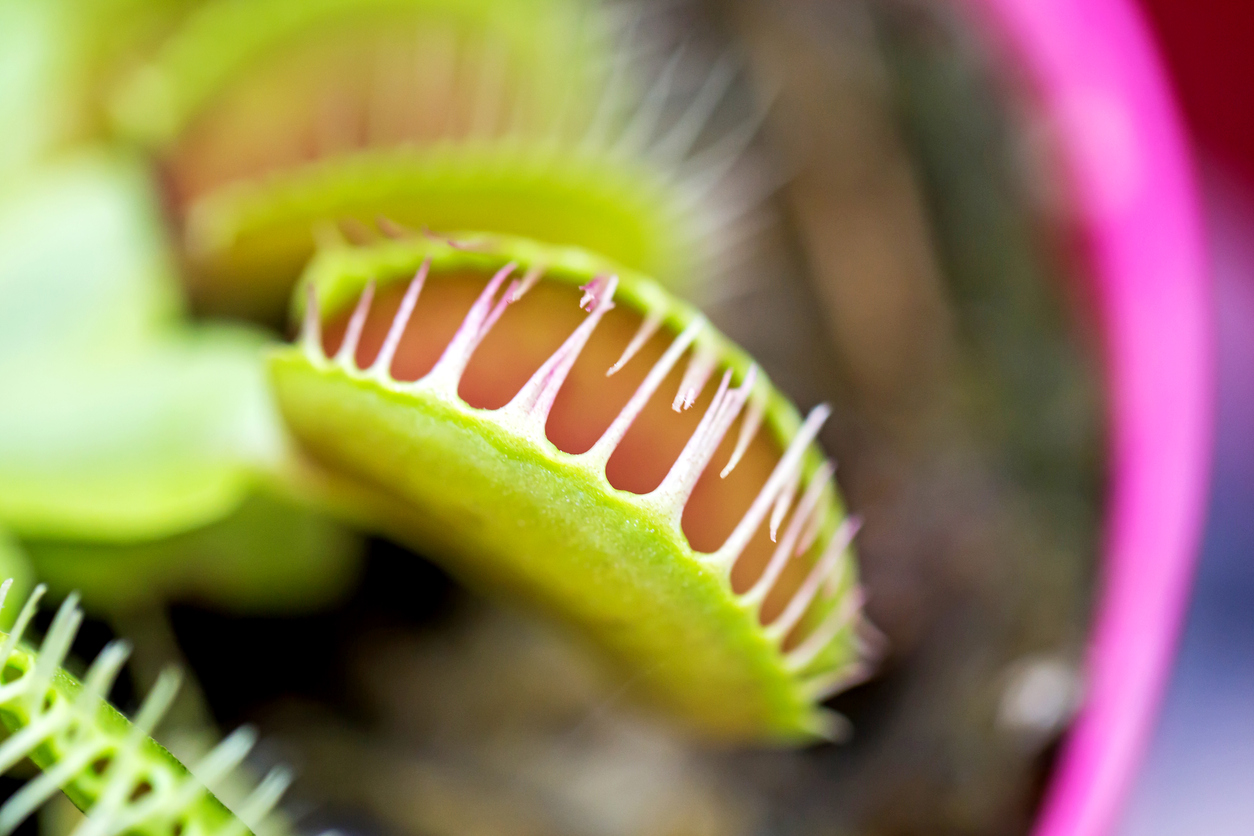
Scientists Use Glowing Venus Flytraps to Understand Its Closure Mechanism
October 21, 2020| |
Genetic engineering of carnivorous plant, Venus flytrap, led the researchers from The Graduate University for Advanced Studies to visualize the chemistry that aids them close quickly to capture insect prey. The study is published in Nature Plants.
The closing of the leaves usually needs two consecutive mechanical stimuli to sensory hairs on the leaf blade within ~30 seconds. It was previously believed that an unknown mechanism in the plant remembers the first stimulus and transduce the signal originating from the sensory hair to the leaf blade. Thus, the researchers sought to find out the signal memory using a transgenic Venus flytrap expressing a calcium ion sensor. As the calcium enters into the cells, the leaves start to glow, elucidating how the ions build up.
It was found that the initial stimulation of the sensory hair leads to an increase of calcium ions in the cytosol spreading from the sensory hair to the leaf blade. The second stimulus further boosts the calcium ions in the cytosol and reaches a threshold, which is linked to the leaf blade closing. The results of the study provide insights into the role of calcium ions in plant movement mechanisms and their evolution.
Read more findings in Nature Plants.
| |
You might also like:
- Researchers Find Molecular Marker for Calcium in Potatoes
- Researchers Discover How Protein Connecting Calcium and Hormone Regulates Plant Growth
- Scientists Discover Plants Use Calcium to Send Internal Warning Signals of Aphid Attacks
Biotech Updates is a weekly newsletter of ISAAA, a not-for-profit organization. It is distributed for free to over 22,000 subscribers worldwide to inform them about the key developments in biosciences, especially in biotechnology. Your support will help us in our mission to feed the world with knowledge. You can help by donating as little as $10.
-
See more articles:
-
News from Around the World
- WHO Refers to GM Mosquitoes as Beneficial Technology
- Scientists Use Glowing Venus Flytraps to Understand Its Closure Mechanism
- Pamela Ronald is 2020 World Agriculture Prize Laureate
- Pinkglow™, Del Monte's Pink Pineapple Now Available
- Indian Farmer Confirms Socio-economic Impact of Bt Cotton
- Biotech Experts to Tackle Global Impact of GM Crops
- EFSA Study Concludes Maize MON810 Poses No Risk to Humans, Animals, or the Environment
-
Research Highlights
- Researchers Pinpoint Peanut Genes Linked to Salt and Drought Tolerance
-
Plant
- New Tool to Accelerate Crop Improvement with CRISPR
- New Genome Editing Tool Designed to Make Big DNA Edits
-
Health
- International Team of Scientists Identify Common Vulnerabilities in COVID-19 and Other Lethal Coronaviruses
- COVID-19 Virus Can Survive 28 Days on Surfaces
-
Read the latest: - Biotech Updates (April 17, 2024)
- Gene Editing Supplement (April 10, 2024)
- Gene Drive Supplement (February 22, 2023)
-
Subscribe to BU: - Share
- Tweet

